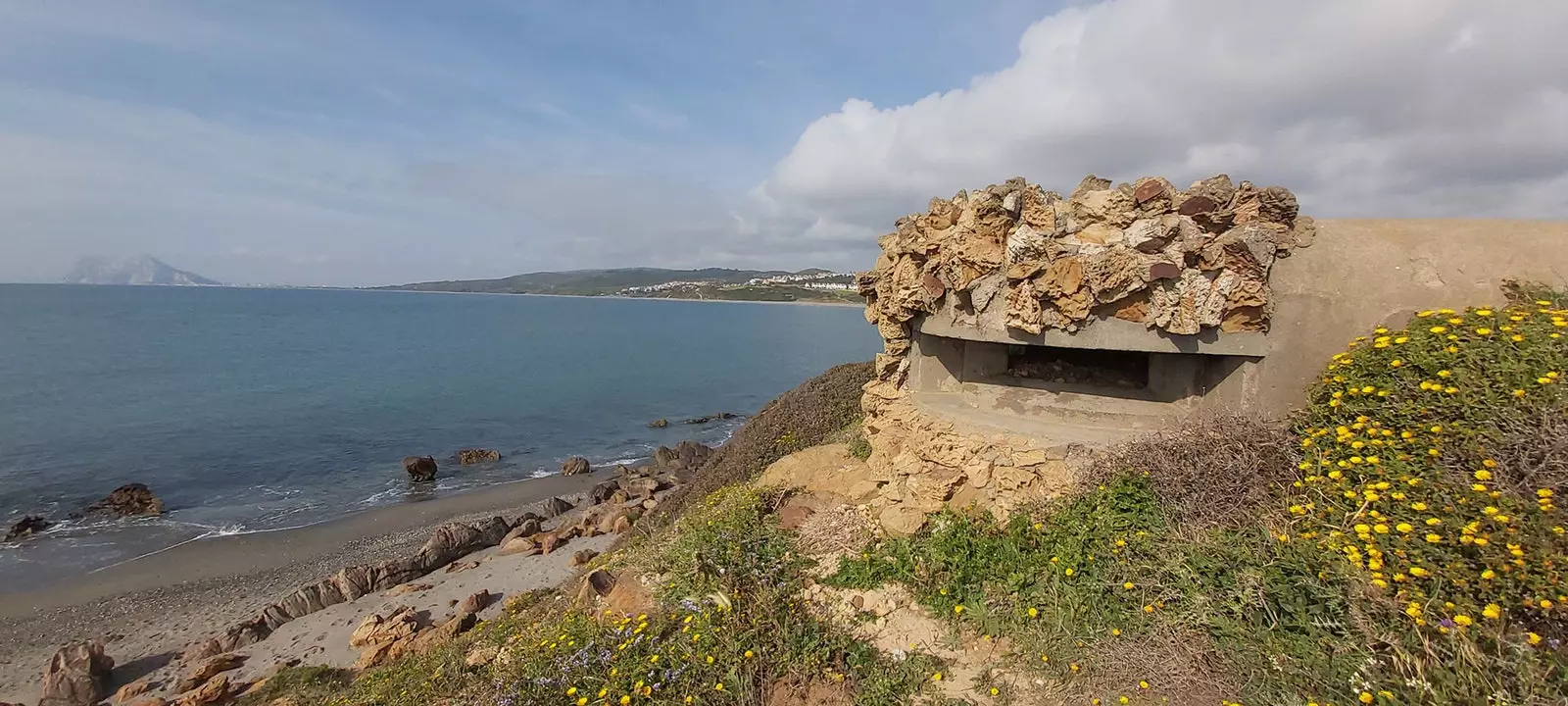
Bunker on the beach of La Alcaidesa 'El Faro', in San Roque.
As our car turns off the N-340 at San Roque and heads a rocky dirt road that takes us into the heart of the Sierra Carbonera, our attention is absolutely captured by the incredible views that are contemplated of the Bay of Algeciras. However, at a certain point, something else surprises us: some curious constructions that, embraced by nature, appear timidly between bushes and plants. Yes: it seems that we have arrived.
Because this time we have put heading south, specifically, to the Strait of Gibraltar, with the intention of discovering and surprising us with a fundamental part of history region of. A story that, however, very few know. Moreover, not even many locals are aware of what the landscapes that surround them hide.
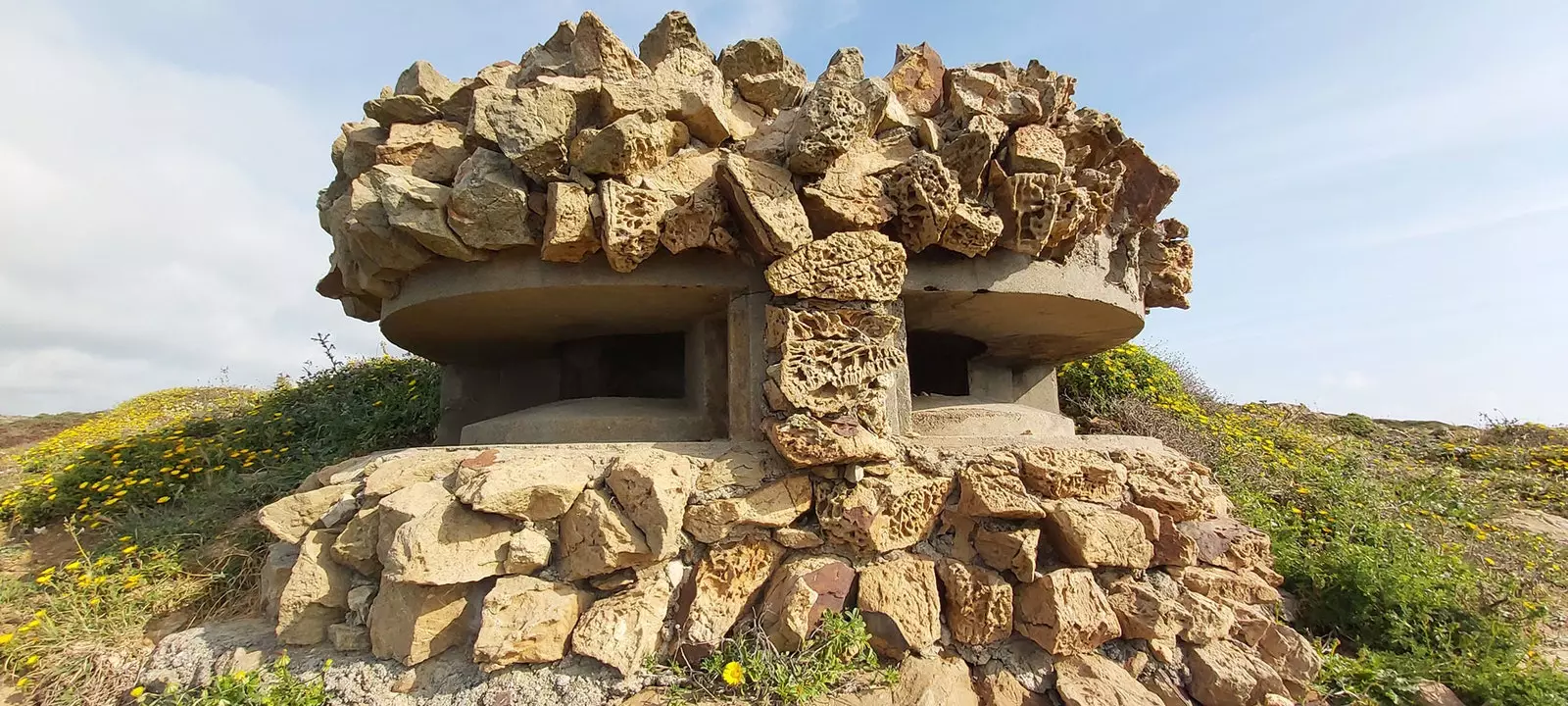
Bunker on the beach of La Alcaidesa 'El Faro', in San Roque.
We parked the car on the side of the road and started to explore, which is what it touches. Now yes, we are already immersed in the Sierra Carbonera, the natural space that marks the limit between the municipalities of San Roque, to whose municipal area it belongs, and La Línea de la Concepción. Here, between hills full of vegetation, steep gorges and slopes, it turns out that a large part of the 500 bunkers of war that were built between San Enrique de Guadiaro and Conil de la Frontera after the end of the Civil War. What? How do you stay?
This unique defensive line was baptized as the Wall of the Strait, and was raised after the national conflict for fear that, after Spain Had he shown his support for Germany and Italy in World War II, he might have been attacked by the British Army. If so, what was clear from the high command is that this offensive would come from Gibraltar or Morocco. How to deal with that possibility? Shielding the coast, there was no doubt.
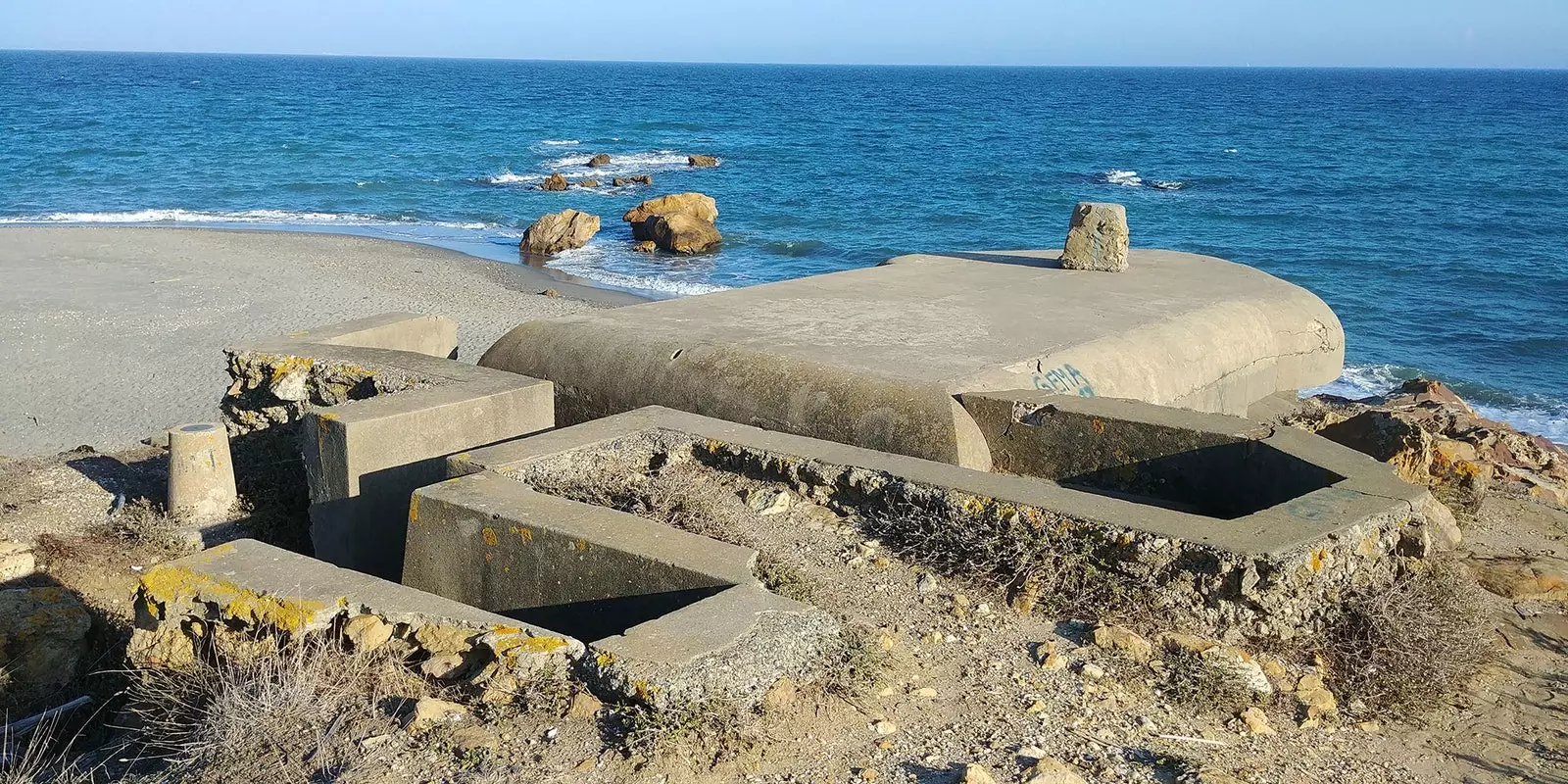
Bunker on the beach of La Alcaidesa 'El Faro', in San Roque.
A) Yes, in this way, it was how the Strait of Gibraltar came to host the largest concentration of forts of the entire Iberian Peninsula.
WALKING THROUGH HISTORY
We begin to walk along trails, some partially marked, others traced as we go, to have a date with history. We are accompanied by Carlos Jordan, a member of the Ruta de los Búnkers Cultural Association, which has been fighting for years to spread this legacy completely abandoned and unknown historical site. When conditions permit, its components organize guided tours, sometimes even characterized with clothing of the time. He leads us through nature without failing to explain every detail.
Pointing us in the distance, With his help we managed to recognize in the same gorge about 12 bunkers of different types, some camouflaged in the natural rock itself. Carlos strives to explain the differences between machine gun nests, gola pits or rifle galleries. Terms of war that seem almost fictional to us, although nothing is further from reality: yes, That hypothetical allied invasion was never received, so it was never necessary to use them.
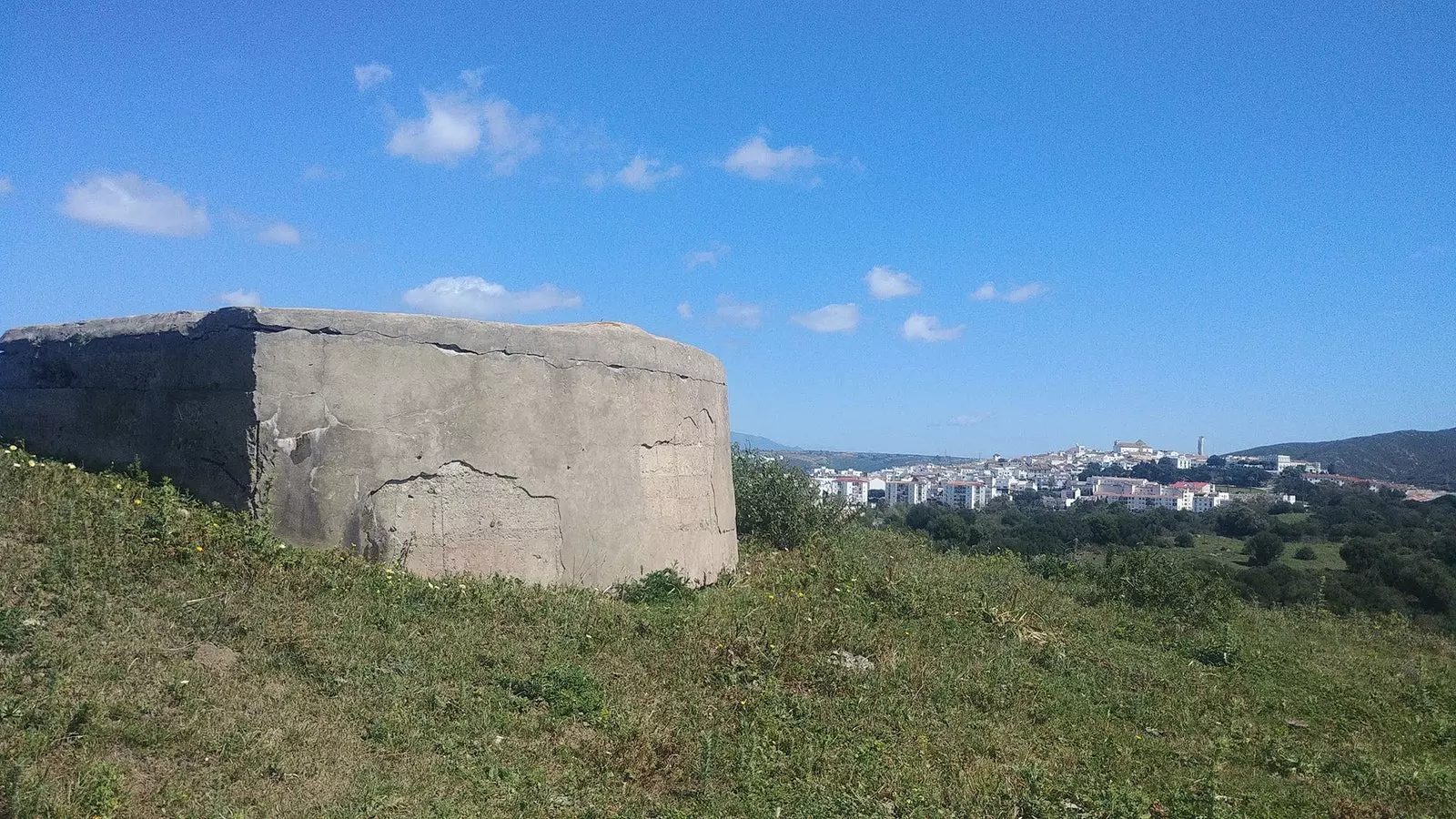
Bunker in the hills of Carteia.
We managed to climb carefully to the dome of one of those bunkers to admire the views that, during those years, so many soldiers enjoyed daily in their role as watchmen. An immense Mediterranean is crowned by the rock, the Rock of Gibraltar, which shows off its dazzling silhouette just a few kilometers from us with its omnipresent blanket of clouds crowning its peak. Beyond, the bay of Algeciras is exultant under an intensely blue sky. The huge cargo ships, that from this point seem tiny to us, they approach and move away from their port incessantly.
It is difficult to get there, but we did it: between rockroses, oaks and heathers we reach the remains of one of the most special bunkers in the area, a command post in the Sierra Carbonera. Overcoming stones and collapsed walls we enter what was once the house, in one of whose corners there are still the remains of a chimney.
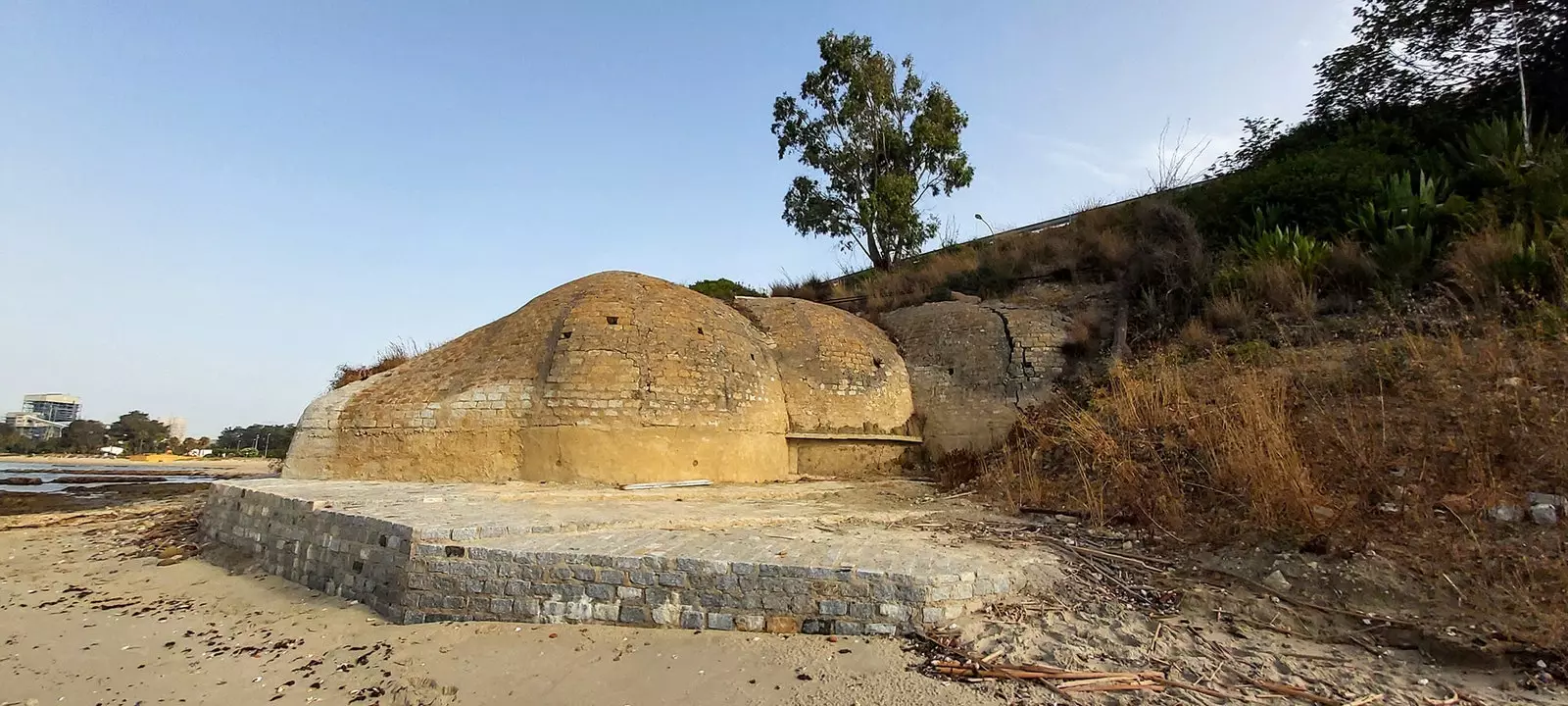
Bunker on Guadarranque beach.
Thanks to the experience of Carlos, who has come dressed with flashlights, we discover a whole world inside: among rubble, and with a hint of claustrophobia showing us its little leg, we let curiosity take us by the hand to go through a tunnel that connects with the crest of the hill and that reaches, after 50 meters, the observation dome opening. In the past, all kinds of orders were sent from it to the different units of the army.
We have not left our astonishment when Carlos warns us that another surprise is yet to come. We still have to walk 10 more minutes through the brush to reach a small, half-hidden opening in a hillside. We crouch down to access and discover, again in the light of the lanterns, an incredible 500 meter long tunnel system running through the hill from side to side. On its walls we can decipher written marks from the 1940s, while at the end of the gallery an intense light shows us the end of the journey. Upon reaching the outside, we get our well-deserved reward: privileged views of the Mediterranean coast and the Strait that give us the best ending to the excursion.
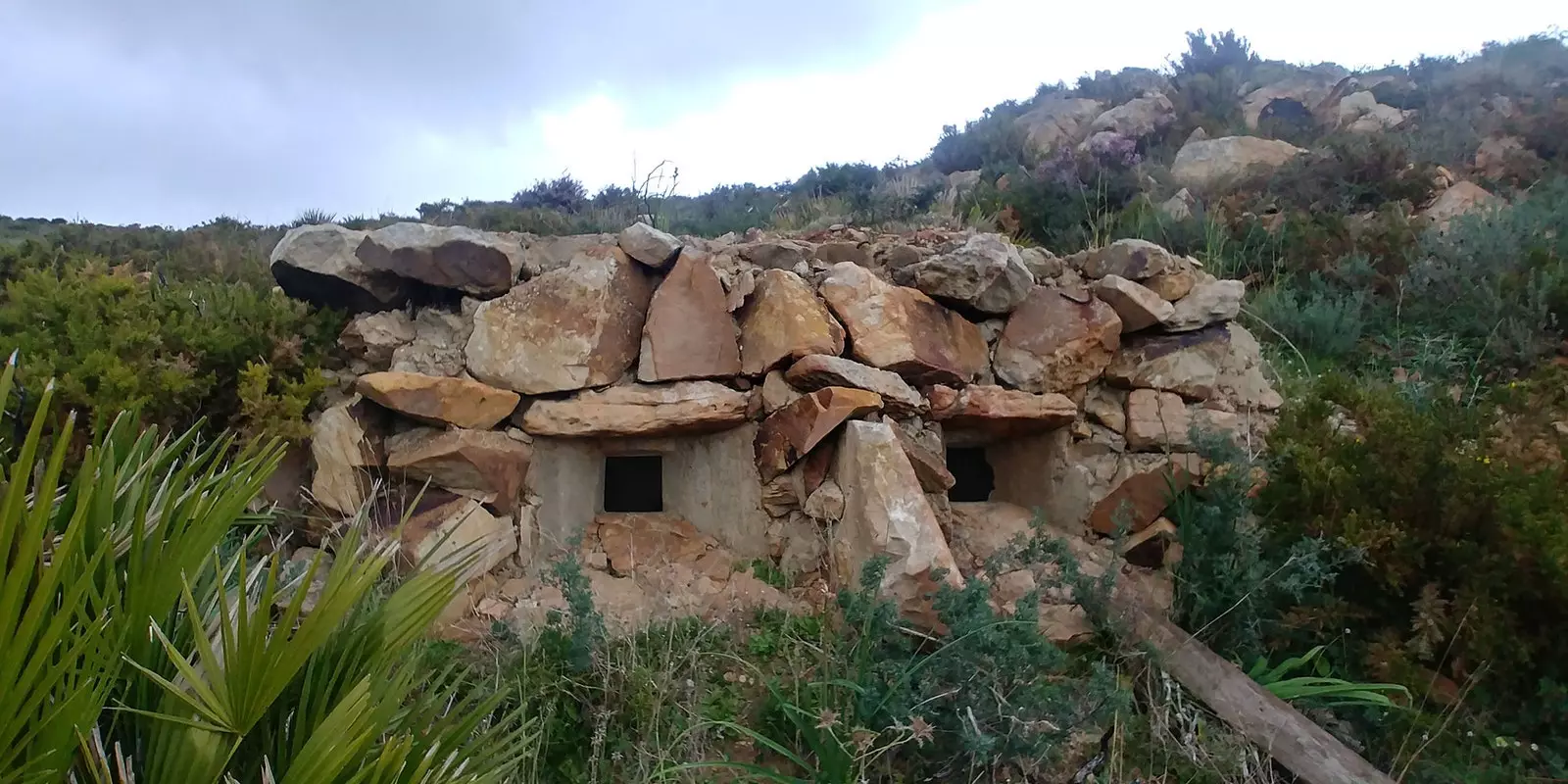
Camouflaged bunker in Sierra Carbonera.
BEYOND THE MOUNTAIN
We move away from Sierra Carbonera to continue investigating in this peculiar Sanroqueño profile, although on this occasion, in a very different context: because the up to 200 bunkers that are concentrated in the San Roque area —of the 500 that populate the Cadiz coast— are not only hidden in the mountains, but it is easy to run into them in the most unexpected corners of the town.
For example, on the beach: there are not a few that dot the coastline at this point of the coast. One of them is found in Guadarranque, sharing space and views with bathers who opt for this enclave to soak. Next to them, with their backs to the refinery whose lights and tall chimneys are one more part of the landscape, is the Archaeological Enclave of Carteia, the vestiges of a city of more than 2,500 years founded by the Phoenicians and converted into a colony of great importance during the Roman period. With a fundamental role in the romanization of the Campo de Gibraltar, it is, of course, our next visit.
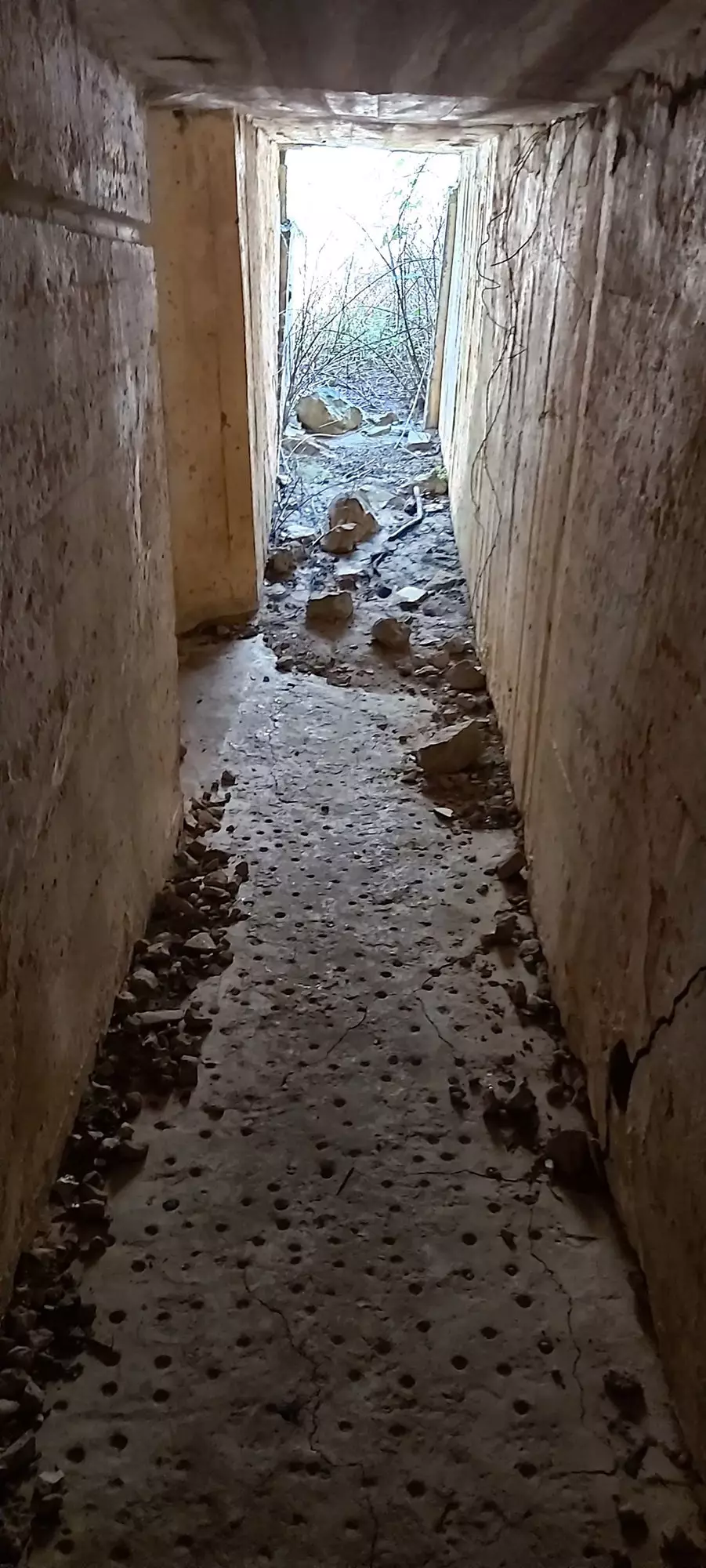
Interior of a bunker command post.
A singular emotion intoxicates us when we begin to tour the archaeological complex: Carteia is considered, not in vain, the most important city of Antiquity built between Cádiz and Málaga. Its remains allow us to guess the most varied corners, although the archaeological work does not stop: there is still much to uncover.
We delight in the contemplation of what was the vast Roman forum, the public area of the city, whose 1st-century steps are from the Augustan period, before continuing along a Roman road and reaching the remains of the theater or a salting factory. We use our imagination when it comes to recreating the various domus whose remains give us a clue of what it had to be in the ancient city and we arrive, hardly inadvertently, at the extensive complex of baths, a wonderful revelation.
In a corner of the enclave -oh, surprise-, we come across another old command bunker: restored and used as a small exhibition space, inside there is a complete exhibition of military objects and equipment from the 1940s, the time of its construction.
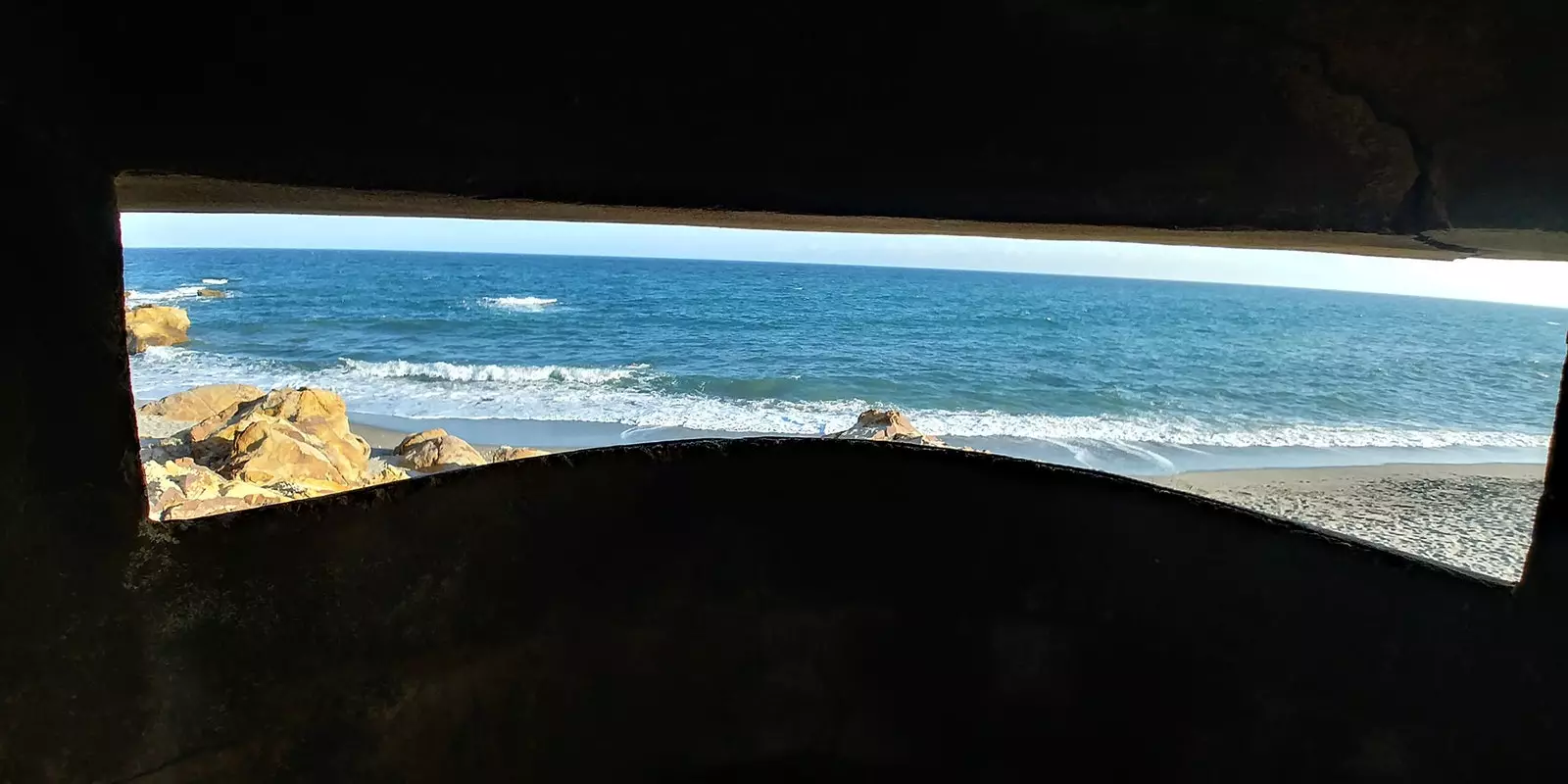
View from inside a bunker.
TAKING ADVANTAGE, WHAT IS A GERUND
Exactly: let's take advantage. Let's take advantage of our visit to this corner of Cadiz to learn a little more about one of the most unique towns from the province. The phrase that welcomes us when we enter San Roque already gives us a clue: “the city where Gibraltar resides”. Well that.
And it is that its foundation in 1704 was given by the hand of Spanish exiles, the five thousand inhabitants of Gibraltar who were forced to flee when the Anglo-Dutch fleet took the Rock. To learn more about its history and heritage, we set out for a walk for its historic center, typical of the white towns of Cádiz and declared a Historic-Artistic Monumental Site. This is how we get to the steep San Felipe street, famous for its splendid manor houses full of striking ironwork and balconies.
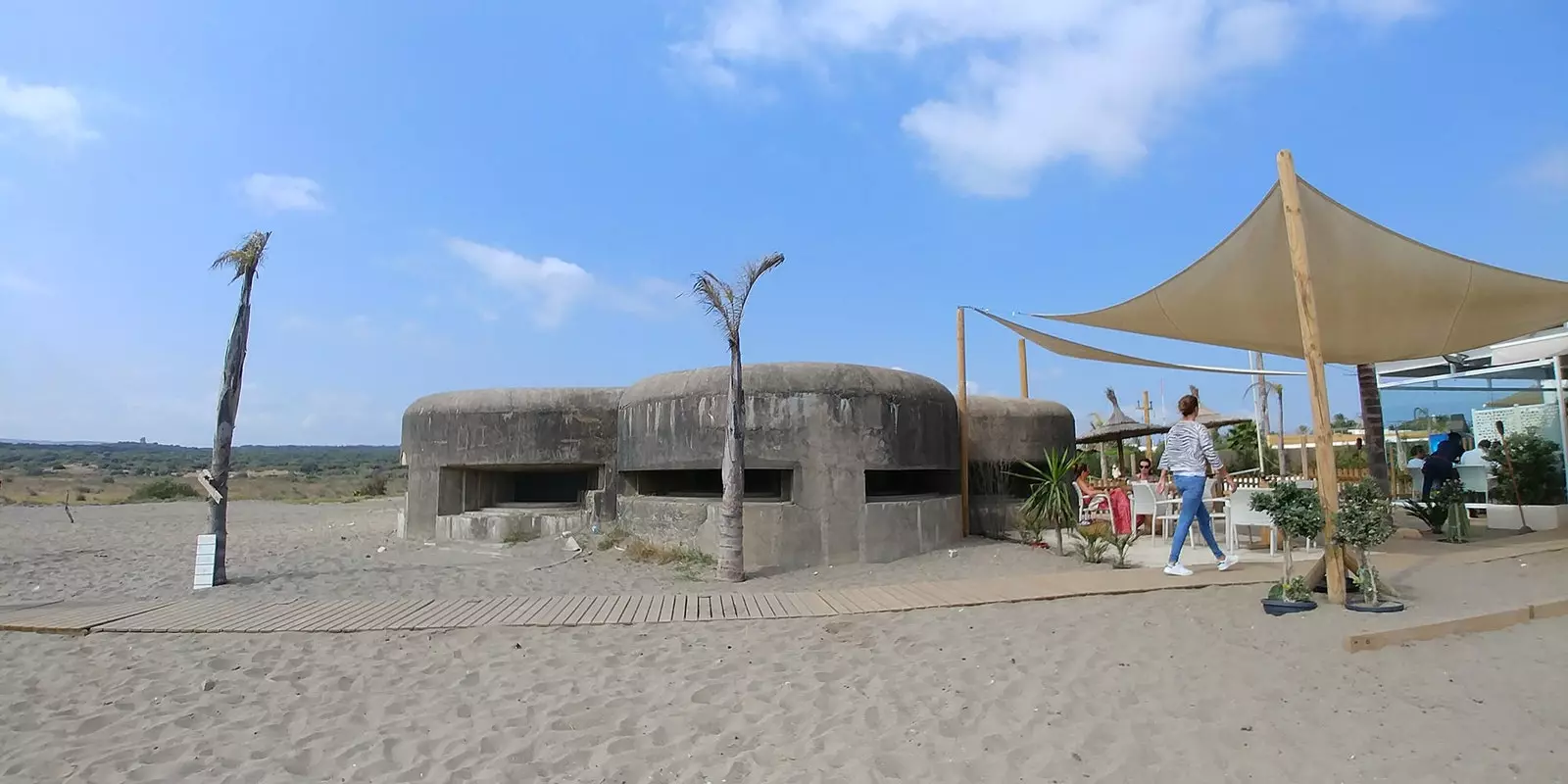
Bunker on Guadalquitón beach, Sotogrande.
We do not hesitate to look at one of them, where we fall surrendered ipso facto to its beautiful Andalusian patio. A type of house that used to belong to the wealthiest families of Gibraltar and the soldiers who settled in the area after exile. A few steps up, and very close to the monumental Plaza de Armas, the Church of Santa María La Coronada, from 1735, it looks like the sanroqueño emblem that it is with its dazzling neoclassical façade.
Next door, another treasure: the Palace of the Governors, former headquarters of the Campo de Gibraltar Military Command, which not only has a museum dedicated to the image maker Luis Ortega Bru made up of more than 170 pieces, but also It also gives away, from the top of its tower, the most spectacular image of the city, Gibraltar and the bay: the sunsets from it are those to frame.
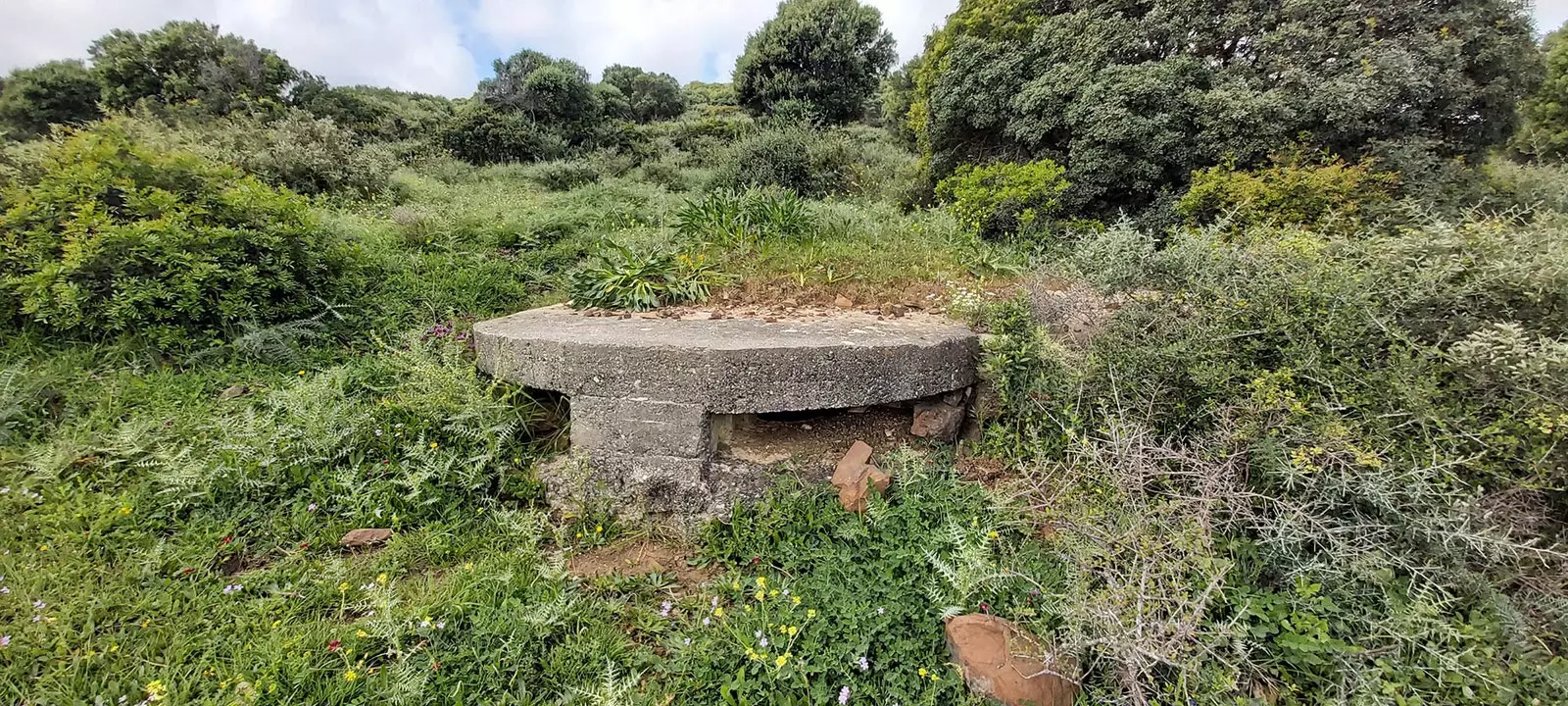
Bunker at San Roque Club.
And so, under the same picture that welcomed us upon arrival and that has haunted us since the first paragraphs of this article, we say goodbye to destiny. Watch as the refinery lights start to come on while the horizon is dyed in reddish tones, it is priceless. Maybe we have to go back.
